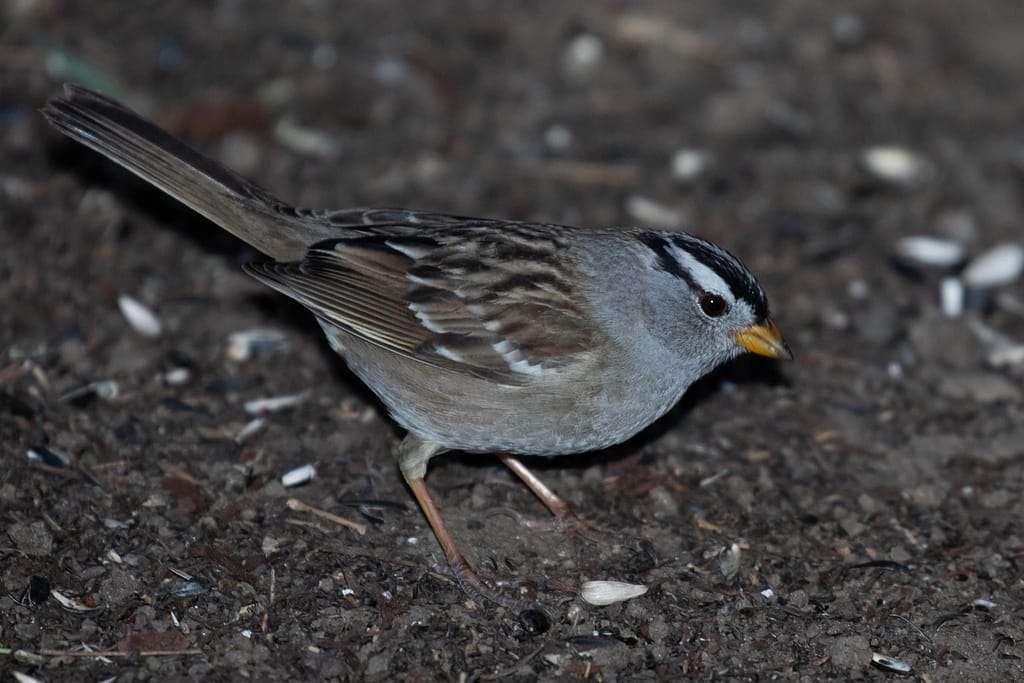
ID BREAKDOWN – Puget & Gambel’s White-crowned Sparrows
May 5, 2020 | by Alex Lamoreaux
There was a surge in sparrow numbers at our Ashland, Oregon bird-feeders today, and both of the expected subspecies of White-crowned Sparrows were present… 2 Puget and 3 Gambel’s. On eBird these are designated as White-crowned Sparrow (pugetensis) and White-crowned Sparrow (Gambel’s). Both subspecies are wintering residents here in the Rogue Valley, with Gambel’s being slightly more common here than Puget. There are slight differences in the preferred wintering habitat between the two subspecies; the Gambel’s seeming to prefer dryer, lower elevation sites and the Puget birds preferring more lush scrubby areas in the foothills. The Gambel’s eventually leave our area, and head north to Alaska for the breeding season, and the Puget birds just head west and breed along the Oregon coast and, rarely, nearby in the Siskiyou Mountains.
The Pugets are slightly larger, have yellow bills, broadly brown flanks, and the center of their backs is black-and-tan striped with no rufous coloration in the mantle or wings. The Gambel’s are brighter overall with orange-pink bills, clean gray napes and upper flanks, and have gray-and-rufous striped backs with noticeable rufous coloration in the mantle and wings. In the field I first try to focus on the center of the back more than anything else; looking for tan-and-black striping versus gray-and-rufous striping, and then I confirm with bill color. These differences might seem subtle in text, but seeing the two side-by-side can demonstrate how much slight variations in color and pattern can affect the entire appearance of birds – even between subspecies.
Backyard birding can lead to excellent opportunities to settle down and key in on variations and identification challenges like this, and you can even start developing relationships with individual birds. Watch for interactions between certain birds, within their own species and toward other species. See if you can pick out individuals by unique characteristics. What subspecies are hidden among the birds in your backyard?

“Puget” White-crowned Sparrow (Photo by Alex Lamoreaux)

“Gambel’s” White-crowned Sparrow (Photo by Alex Lamoreaux)
































